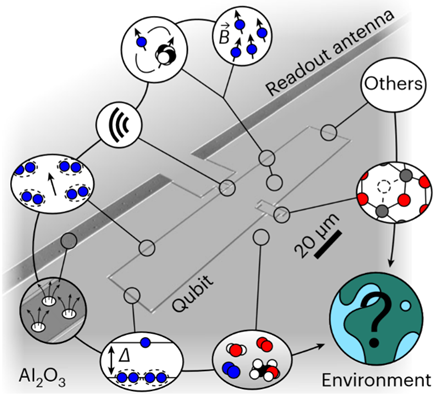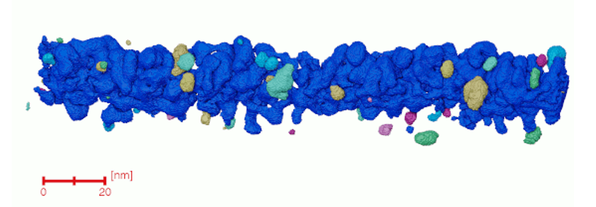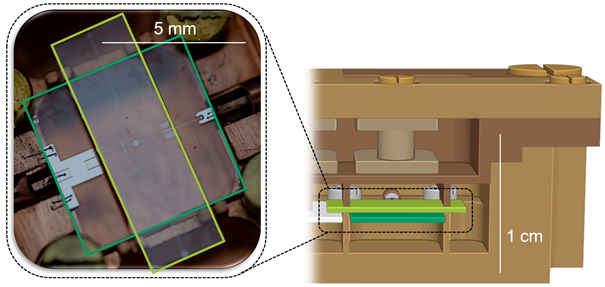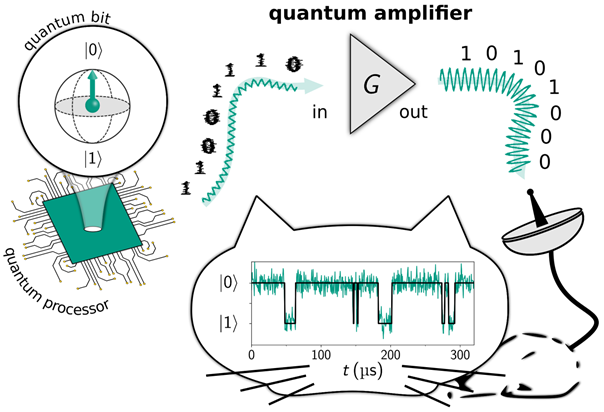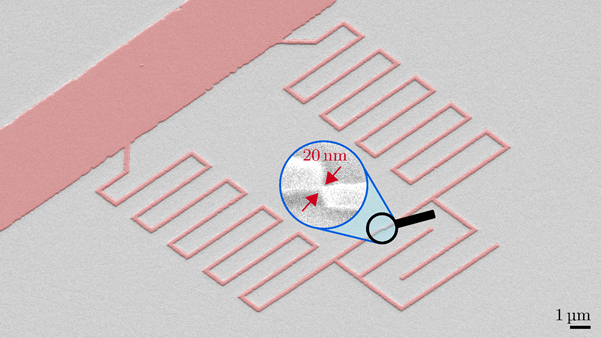Working Group Kinetic Inductance Quantum Systems
|
Mesoscopic Physics Challenges (in) Superconducting Quantum Devices
Superconducting qubits are at the forefront of quantum computing research. Harnessing the low loss properties of superconductors and the nonlinearity of Josephson junctions, mesoscopic superconducting devices can be engineered to exist in quantum superposition states and they can be entangled, promising scalable quantum information processing machines. By controlling and measuring these fragile quantum states, the community eventually aims to implement powerful quantum algorithms, which on some applications have a much more favourable scaling compared to classical counterparts. However, many challenges persist in maintaining coherence, mitigating noise, and enhancing gate fidelity. We are currently focusing on three mesoscopic physics phenomena which significantly complicate the task of engineering coherent superconducting hardware: ionizing radiation interactions with the microelectronic qubit device substrate (1), long lived and uncontrolled two-level systems which imprint a memory in the qubit's environment (2,3), and fluctuations in the transparency of aluminum oxide tunnel barriers at the heart of Josephson junctions (4).
|
|
Materials Science for Quantum Information Hardware
Superconducting quantum circuits have promising applications in the fields of quantum computing and detection. In general, their performance is limited by a variety of dissipation and noise sources. For mitigating these, the main focus over the last decade has been on improving microwave design and fabrication processes. Another approach, recently in the spotlight and the heart of this project, is to explore new materials entirely. To this goal, we employ the vast palette of advanced characterization techniques available in modern materials science.
One promising candidate material is Tantalum (5). It has recently enabled a step increase in Transmon qubit lifetimes. The aim of our investigation of Ta is to relate structural material properties, such as for example strain, grain sizes or defect density to loss in superconducting circuits and with this knowledge push qubit coherence times even further.
Another example for material investigated as part of this project is granular aluminum (grAl). It is a nanocomposite of self-assembled aluminum nanograins embedded in an amorphous alumina matrix (6). The oxide fraction can be varied over a wide range, giving rise to a superconductor-to-insulator transition. Both the resulting variable kinetic inductance and the non-linearity introduced by grAl-based elements are valuable resources in superconducting circuits. While surface dielectric losses associated with grAl have been found to be comparable to that of pure aluminum (7), inductive losses, and quasiparticle poisoning in particular, remain an open challenge. Armed with an increasingly better understanding of its microscopic structure, we study various loss and noise mechanisms in grAl and develop techniques to mitigate them.
|
| Selected Publications: |
| (5) Ritika Dhundhwal et al., arXiv:2502. 17247 (2025) |
| (6) N. Maleeva et al., Nat. Commun. 9 (2018) 3889 |
| (7) L. Grünhaupt et al., Phys. Rev. Lett. 121 (2018) 117001 |
Modular Quantum Processor
We aim to develop a framework for circuit quantum electrodynamics using a flip-chip architecture in which we implement the readout, coupling and flux control of generalized flux qubits in a fully modular manner, so that circuits serving different tasks within the system can be prepared and exchanged individually. This creates optimal conditions for developing and testing innovative coupling schemes for all types of flux qubits (8). Furthermore, we want to explore the effects of having fully separated qubits on distinct chips by studying the differences to more conventional on-chip architectures, e.g. in terms of correlated qubit errors and gate fidelities.
|
| Selected Publications: |
| (8) Soeren Ihssen et al., Appl. Phys. Lett. 126 (2025) 134003 |
DJJAA Quantum Amplifiers
One of the fundamental necessities of quantum information processing is the rapid determination of a qubit's state, on a time-scale significantly faster than its relaxation time. While it is theoretically possible to enhance the amplitude of the readout signal beyond the noise threshold of conventional high-electron-mobility-transistor (HEMT) amplifiers, this generally leads to quantum demolition effects, consequently diminishing the overall fidelity of readout. We therefore need to use amplifiers with the lowest possible added noise, i.e. operating as close as possible to the quantum limit.
In superconducting parametric amplifiers, the nonlinearity required to transfer energy from a strong classical pump tone to a weak quantum signal is provided by low-loss inductive elements, typically Josephson junctions (JJs). Entirely fabricated by standard two-step optical-lithography techniques, our parametric amplifiers consist of a dispersion-engineered Josephson-junction array (9). We refer to these devices as dimer Josephson-junction-array amplifiers (DJJAAs). By using long arrays, containing thousands of JJs, we can obtain amplification in multiple eigenmodes and large dynamic range. Moreover, flux tunability of each mode can be engineered by employing superconducting-quantum-interference-device junctions (SQUIDs), and a single DJJAA amplifier can potentially cover the entire frequency band between 1 and 10 GHz.
DJJAAs are commonly used tools for superconducting qubit readout (10,11,12,13), and we are continuously developing new variations and functionalities.
|
Superconducting Quantum Circuits for Hybrid Architectures
Hybrid quantum architectures promise to combine the advantages of two (or more) qubit platforms while avoiding their weaknesses. Therefore, they could be gamechangers in the search for the prefect compromise between coherence and control in a scalable quantum computer. In this project, in collaboration with the group of Wolfgang Wernsdorfer at KIT, we aim to make superconducting quantum circuits compatible with strong magnetic fields in the Tesla range, which is a key requirement for many hybrid quantum architectures. In the quest for a suitable material, the contestant must combine tolerance to strong magnetic fields and low microwave losses to preserve quantum coherence. Granular aluminum (grAl), with a critical field in the few Tesla range, proved to maintain low microwave losses in resonator measurements in magnetic fields up to 1T (14, 17), which makes it a promising candidate. An additional requirement to realize superconducting qubits is a non-linear element, conventionally realized by a superconductor-insulator-superconductor Josephson junction (JJ). Granular aluminum, consisting of aluminum grains in an amorphous AlOx matrix, resembles a 3D network of JJs. This allows to tailor the non-linearity of a structure by simply tuning the cross-section of the grAl regions. In a superconducting Transmon qubit, we show that the conventional JJ can be replaced by a small volume of grAl (15). Moreover, we demonstrate that using grAl it is possible to obtain superconducting Fluxonium qubits from a single layer of superconducting thin-film (16). In a next step, we aim for a grAl-based qubit resilient to magnetic fields up to 1T (18,19).
|

